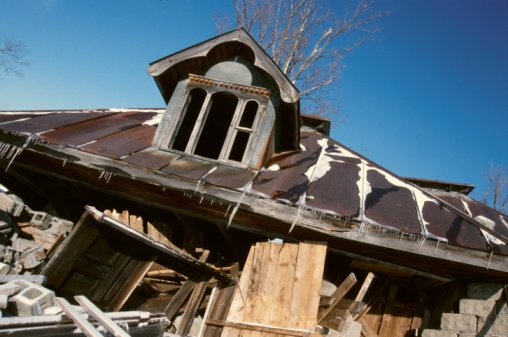
Things to Check For When You're Buying an Older Home
June 26, 2014 2:33 pmWe all love older homes – there’s just something about the regality and history associated with structures that are 75+ years old that is simply captivating. Let’s be honest, who wouldn’t love to hunt out an amazing bargain on an older home, renovate it, bring it back to life, and claim it as their own? However, with the sweets come the sours. With that age and history, you don’t truly know what kind of problems you will run into with buying and renovating an older home. If you jump in head first without doing any research or knowing what to look for, you may end up losing more money than you anticipated, and no one wants that to happen. Here’s a definitive guide to commonly overlooked problems in older homes.
Good bones. If the base structure of the home is compromised, you can bet that it will be expensive to renovate. Have a professional thoroughly inspect the condition of the plumbing, electrical, HVAC (if applicable), structural condition and the actual foundation of the home. Know the difference between sinking and settling, aging and broken. Call specialists if need be – it’s smarter to spend a little bit more money on the front end of things when it’s expected instead of getting elbow-deep in the project only to find out that the foundation of the home is sinking, or that some of the electrical lines have been chewed through by rodents. By making sure that the home’s base structure in good shape, you’ll be able to save money from the beginning by prioritizing what needs to be renovated in the home without having to worry about surprise expenses.
Does the house have a nice sweater? Even if your HVAC system rocks and the base structures of the home are in excellent shape, don’t forget to examine the insulation of the home. After all, your HVAC system is only as good as the insulation that keeps the warm and cold air inside its walls. Again, have a professional inspect your attic and walls for adequate insulation if you’re not well versed in this area.
How’s the view? Something that is overlooked with surprising frequency is the windows. Besides the really noticeable items, such as cracks or breaks in the glass, look at how thick the actual window panes are and the condition of the framing and sills. Single pane windows are a relic of the past and can be indicative of how energy efficient your home will be. If there are gaps between the windows and the framing, this will negatively impact the energy efficiency as well. If the wood of the sills or frames feels like it may be soft, gently press a screwdriver against it and see if it gives easily. If so, this is a sure sign of wood rot and replacement is necessary. Thermal windows are an excellent choice when trying to increase the overall energy efficiency of your home. Let’s be honest here, who doesn’t want to have an energy efficient home?
Nom nom nom. Two small, but mighty, things you want to make sure aren’t going to be issues are termites and carpenter ants. These little critters can be the last nail in the coffin, so to speak, of a once strong structure. Signs of infestation include hollowed-out wood, wood debris, and dead insects. You can find more comprehensive information on pest control blogs, or you can call a local pest control service to come out and inspect.
As always, when looking for these problems, if you’re not 100% sure, call a professional and have them give the property a once over to tell you what potential problems you may have to look forward to. For your roofing and window questions, give us a call at 405-755-7500 or take a picture of your roof and upload it to our Online Damage Evaluation form.

